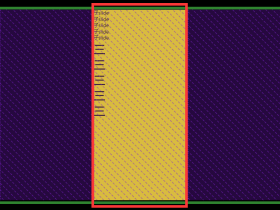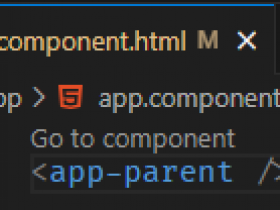- A+
所属分类:Web前端
众所周知,async/await只是一个语法糖,它是基于生成器来实现的,我根据网上的资料,从头开始写出它中间的原理实现。
生成器
生成器是在定义函数时在function后添加*定义的,像这样:function* func(){},执行生成器函数后会得到一个迭代器,在生成器函数中能支持yield来暂停函数,直到迭代器调用next方法.同时next能传入一个参数来作为yield的值。
这里先定义两个异步函数来作为以后的实验对象:
function afunc() { return new Promise((resolve, reject) => { setTimeout(() => { resolve("afunc"); }, 1000); }); } function bfunc() { return new Promise((resolve, reject) => { setTimeout(() => { resolve("bfunc"); }, 2000); }); } 第一版
首先分别定义两个函数,一个是收集在async函数中需要使用的异步函数,一个是async函数主体在这里运行异步的函数。
function collector(...fn) { return function () { for (const item of fn) { item().then((fulfilled) => it.next(fulfilled)); } }; } function* async(...fn) { let inner = collector(...fn); console.log("aaa"); console.log(yield inner()); console.log("bbb"); console.log(yield inner()); } let it = async(afunc, bfunc); it.next(); // 运行结果: aaa afunc bbb bfunc 可以看到,已经可以让同步方法在两个异步函数中间了,但是这个方案有个问题,本来这个函数期待是三秒打印完,这里只花了两秒,原因在于在collector中同步进行了数组遍历,所以需要把。
第二版
既然原因是同步执行了收集到的函数,那我直接写在函数体里不就行了?这样就可以得到这个并不好用的第二版:
function* generator() { console.log("aaa"); let result = yield afunc().then((fulfilled) => { it.next(fulfilled); }); console.log(result); let other = yield bfunc().then((fulfilled) => { it.next(fulfilled); }); console.log(other); } it = generator(); it.next(); // 运行结果: aaa afunc bbb bfunc 不过既然已经得到了想要的结果,这里只需要把它包装一下就可以了
第三版
这一版就相当接近async/await的写法了,通过在生成器函数中定义函数执行顺序,在每次执行异步函数时跳出,等到异步函数执行完成后再进行下一步。
function* generator() { let result = yield afunc(); console.log(result); let other = yield bfunc(); console.log(other); } myAwait(generator); function myAwait(genner, ...args) { let iter = genner(...args); //得到生成器的迭代器 return new Promise((resolve, reject) => { let result; //iter每次暂停时的结果 //! inner就是在手动迭代iter let inner = function (yield) { result = iter.next(yield); //开始迭代 将这里的yield当作yield传入生成器 if (result.done) { //迭代结束: resolve(result.value); //Promise结束 } else { //如果没有结束 等到promise的结束继续递归 return Promise.resolve(result.value).then((fulfilled) => { inner(fulfilled); }); } }; inner(); //迭代器第一次不应该传入参数 }); } 只要再加上一些错误处理,这样一个手写async/await就完成了。




